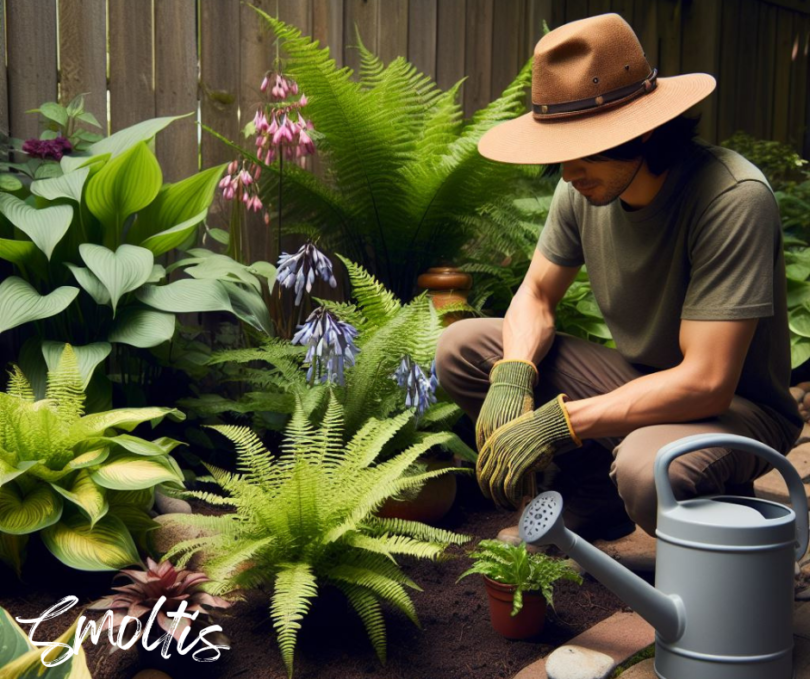Planting shade-loving plants involves specific techniques to ensure they thrive in low-light conditions. Here’s a step-by-step guide to help you successfully plant shade plants:

Steps to Plant Shade Plants
- Choose the Right Plants:
- Select plants that are well-suited to your specific type of shade (full shade, partial shade, or dappled shade) and your USDA hardiness zone.
- Prepare the Soil:
- Test the Soil: Check pH and nutrient levels to understand what amendments might be needed.
- Improve Soil Quality: Add compost, leaf mold, or well-rotted manure to enhance soil structure, fertility, and moisture retention.
- Plan Your Garden Layout:
- Arrange plants based on their mature size and light requirements. Taller plants should go towards the back, with shorter plants in the front.
- Dig the Planting Holes:
- Size: Dig holes that are twice the width of the root ball and just as deep.
- Spacing: Space the holes according to the mature size of the plants to avoid overcrowding.
- Planting:
- Remove the Plant: Gently remove the plant from its container, being careful not to damage the roots.
- Place in Hole: Position the plant in the hole so that the top of the root ball is level with the surrounding soil.
- Backfill: Fill the hole with soil, gently firming it around the roots to eliminate air pockets.
- Watering:
- Initial Watering: Water thoroughly after planting to help settle the soil and establish the roots.
- Regular Watering: Keep the soil consistently moist, especially during the first growing season. Shade plants generally need less frequent watering than sun-loving plants, but they shouldn’t be allowed to dry out completely.
- Mulching:
- Apply a 2-3 inch layer of mulch around the base of the plants to retain moisture, regulate soil temperature, and suppress weeds.
- Keep the mulch a few inches away from the plant stems to prevent rot.
- Fertilizing:
- Initial Feeding: Mix in a slow-release, balanced fertilizer into the planting hole.
- Seasonal Feeding: Fertilize in early spring with a balanced or shade-specific fertilizer to support growth.
- Pruning and Maintenance:
- Pruning: Regularly prune to remove dead or damaged leaves and to maintain plant shape and size.
- Weeding: Keep the area weed-free to reduce competition for nutrients and water.
- Monitoring: Watch for pests and diseases and treat promptly if issues arise.
Additional Tips for Planting in Shade
- Choose Appropriate Plants: Some good options for shade include hostas, ferns, astilbes, heucheras, hydrangeas, and columbines.
- Consider Light Levels: Observe the amount of light your shady area receives throughout the day and choose plants accordingly (e.g., full shade, partial shade, or dappled shade).
- Create Layers: Use a mix of ground covers, perennials, and shrubs to create a layered effect that adds depth and interest to your garden.
- Focus on Foliage: Many shade plants have interesting foliage colors and textures. Use these to your advantage to create a visually appealing garden.
- Group Plants with Similar Needs: Plant shade-loving plants together to ensure they receive similar care in terms of watering and soil conditions.
By following these methods, you can create a beautiful and thriving shade garden. Shade gardens can be lush and serene, offering a cool retreat during hot summer days. Happy gardening!







